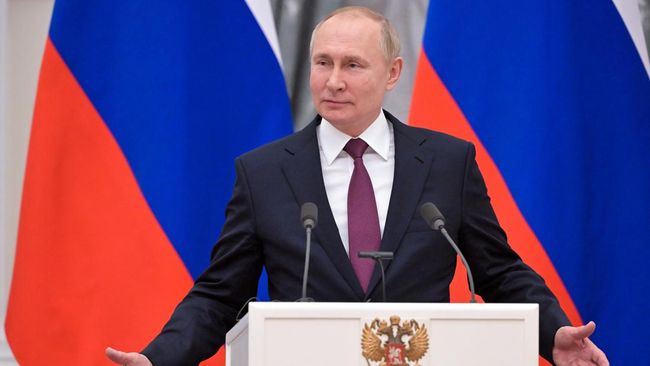Jakarta, CNBC Indonesia – The Russian ruble had slumped to an all-time weakest record against the United States (US) dollar this year. But it did not last long, the ruble was able to rise even today to become the world’s best currency, surpassing the Brazilian real.
The war between Russia and Ukraine that started on February 24 made the ruble slump. Russia received various kinds of sanctions from the United States and its allies, which made the economy slump, and inflation skyrocketed.
On March 7, the ruble touched RUB 150/US$, which was the weakest on record in history.
However, since then the ruble has slowly risen until today Thursday (19/5/2022) it is in the range of RUB 61.75/US$, and recorded a 14.4% strengthening so far this year. The ruble overtook the Brazilian real, which previously continued to be the world’s best currency, strengthening now by 12.8%.
In third place was the Mexican peso with a gain of 2.8%, the Colombian peso and the South African rand rounding out the top 5 with a gain of 1% and 0.6%, according to Refinitiv data.
To date, only 5 of the 36 currencies monitored by Refinitiv have been able to strengthen against the US dollar. The rest experienced depreciation including the rupiah.
|
Photo: Refinitive- – |
So far this year, the rupiah has weakened 2.7% and is in 12th place in the standings. Compared to ASEAN currencies, the rupiah only loses to the Singapore dollar, which is one strip above it.
Returning to the ruble, the Russian currency was able to turn things around after the Russian central bank (Central Bank of Russia / CBR) raised interest rates to 20% from 9.5% a few days after the war broke out. In addition, the Russian government also implemented a capital control policy which in the end made the ruble continue to strengthen.
The ruble continues to strengthen, and sloping inflation expectations make CBR cut interest rates to 14%, and is predicted to be cut again to 12%. However, the ruble continues to strengthen.
Policy capital control had a major impact on the strengthening of the ruble. The policy requires Russian companies to convert 80% of their foreign exchange into rubles. Russia also demanded that gas and oil imported by European countries be paid for in rubles.
In addition, Russian citizens were previously prohibited from sending money abroad, the policy was later relaxed by allowing a maximum transfer of US$ 10,000/month per individual.
Goldman Sachs analysts see, the Russian economy is starting to recover and financial stability is starting to improve which makes the ruble strengthen.
“The Russian economy continues to show recovery from the shock in late February and early March. Concerns about financial stability are starting to subside, and the ruble was able to strengthen to early 2020 levels,” Goldman Sachs economist Clemens Grafe was quoted as saying. CNBC InternationalWednesday (18/5/2022).
CNBC INDONESIA RESEARCH TEAM
Next Article
Russia Punished Market! Ruble Drops 29% Against Dollar
–
–
(pap/pap)
–


